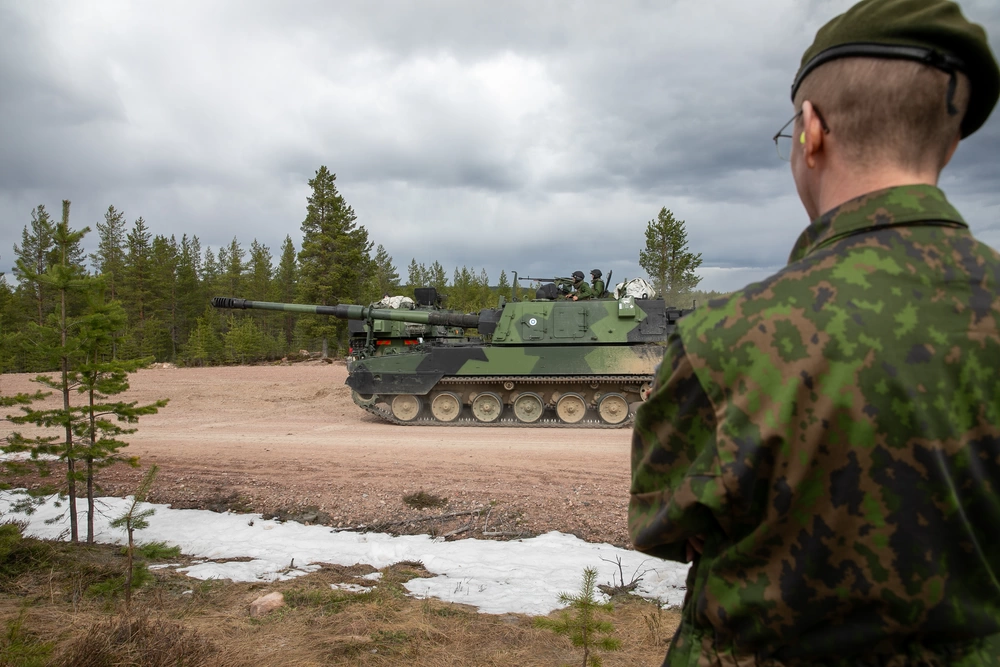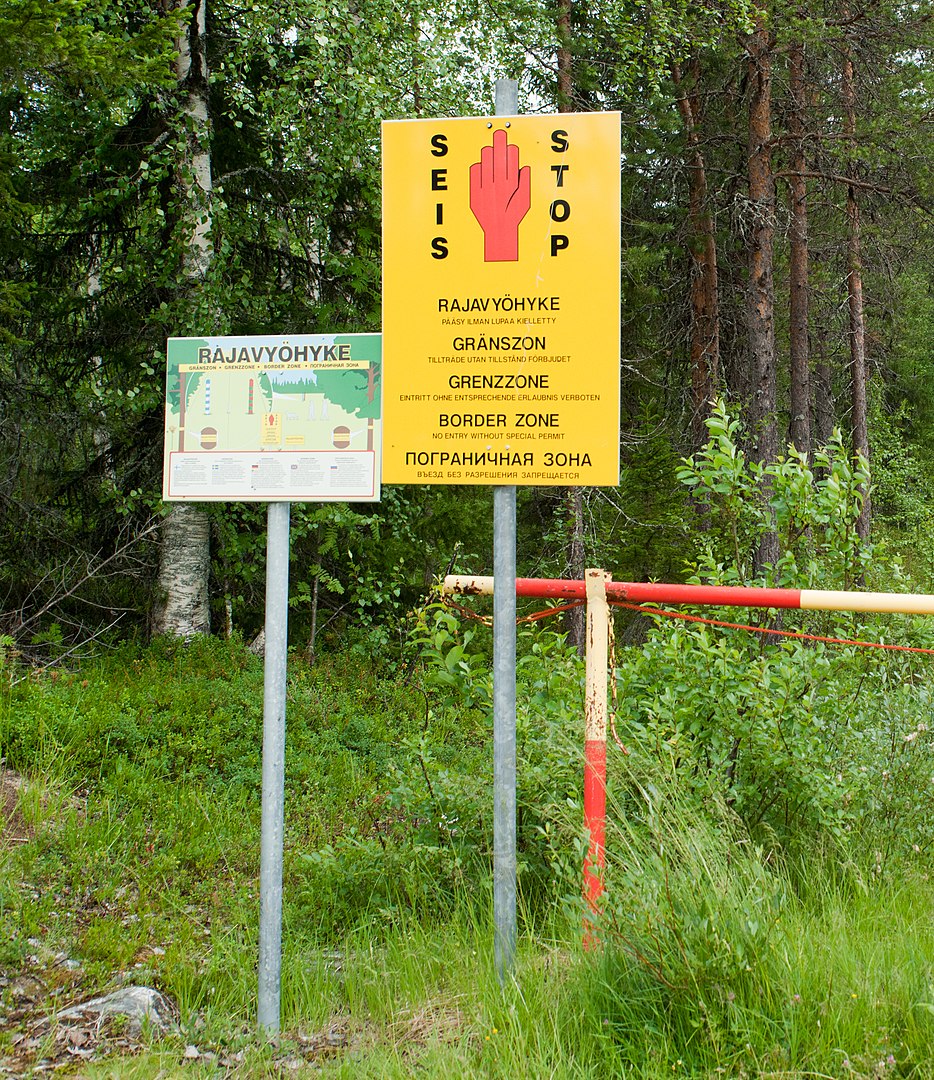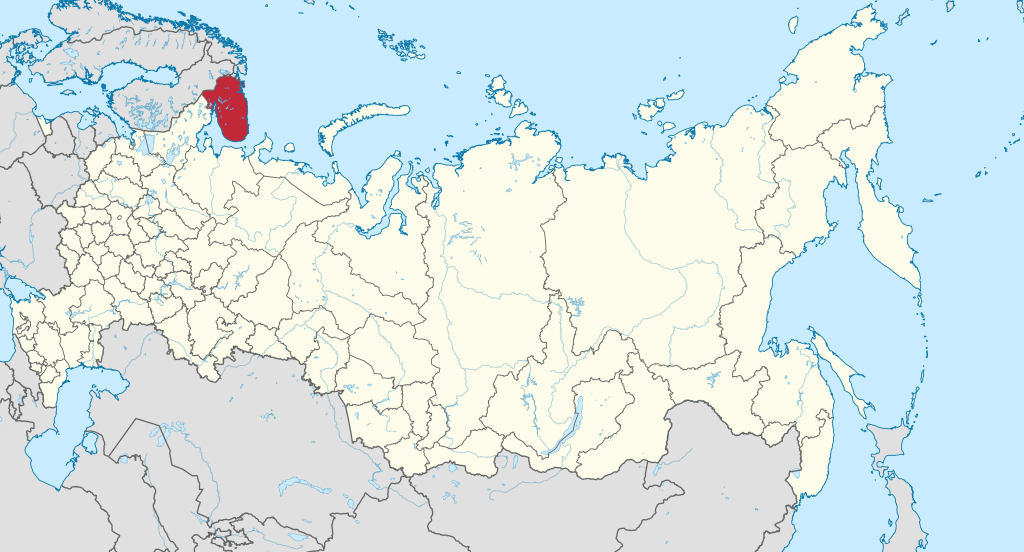
A member of the Finnish Army watches a K-9 Thunder [RG1] 155mm Self-propelled Howitzer drive by after a live fire exercise with U.S. Army Soldiers assigned to the 3rd Brigade Combat Team, 10th Mountain Division, on a range near Rovaniemi, Finland, May 17, 2024.
“Iskanders performed very well during the Special Military Operation [read: war], so the Finns should know that if something happens, such joy can come to them,” military expert Dmitry Boltenkov said to Izvestia.”
With the reestablishment of the Leningrad Military District, previously neutral Finland has become a focus of Russian and NATO interests. The excerpted article from Norway-based The Barents Observer highlights Russia’s decision to form a missile brigade featuring Iskander missiles in the Republic of Karelia, near Finland. Former Russian Defense Minister Sergei Shoigu noted that due to Finland’s decision to join NATO, and “NATO’s desire to build up military potential near the Russian borders, as well as to expand the North Atlantic Alliance at the expense of Finland and Sweden,” Russia was required to undertake “retaliatory measures…to create an appropriate grouping of troops in Northwest Russia.” Russia’s decision to form a missile brigade so close to Finland also coincided with the annual U.S.-led Immediate Response 2024 exercise which took place in northern Europe in April and included Finland. Immediate Response featured U.S. equipment sent to Europe to support the exercise.[i] What probably interests Russia most is how much of what equipment the U.S. leaves behind and where they leave it.
Sources:
Source: Thomas Nielsen, “Finland relaxed over Moscow’s plans to deploy Iskander-M missiles near border”, The Barents Observer (independent Norwegian news site in Russian and English currently blocked in Russia), 24 April 2024. https://thebarentsobserver.com/en/security/2024/04/finland-relaxed-over-moscows-plans-deploy-iskander-missiles-near-border
In its Kremlin-loyal newspaper Izvestia the Russian Defense Ministry reports on the new formation of a separate missile brigade in the Republic of Karelia. “Iskanders performed very well during the Special Military Operation [read: war], so the Finns should know that if something happens, such joy can come to them,” military expert Dmitry Boltenkov said to Izvestia.
Iskander-M [RG1] is mobile and each vehicle can carry two missiles. The missile flies ballistic at a hypersonic speed of Mach 6 and has a range of 400-500 kilometers. Several different conventional warheads can be attached to the missiles, including a cluster munitions warhead, enhanced-blast warhead, high-explosive fragmentation warhead, an earth penetrator for bunker busting and an electromagnetic pulse device for anti-radar missions. The missile can also carry nuclear warheads.
Moscow has repeatedly said Finland’s decision to join NATO is provocative and will destabilize the security landscape in northern Europe. “Given NATO’s desire to build up military potential near the Russian borders, as well as to expand the North Atlantic Alliance at the expense of Finland and Sweden, retaliatory measures are required to create an appropriate grouping of troops in Northwest Russia,” Defense Minister Sergei Shoigu previously stated.
The fact is that it was Russia’s brutal and unprovoked war of aggression against Ukraine that destabilized geopolitics in all of Europe. Finnish NATO-membership was not on the political agenda in Helsinki before February 24, 2022.
Finland shares a 1,340 km border with Russia from the Baltic Sea in the south to the Kola Peninsula in the north. The border has been closed by Helsinki since last fall when Russia’s FSB directed huge crowds of migrants to enter Finland in what Finnish authorities have called a hybrid operation.
…Finland joined NATO in April 2023, a move that caused Russia to restructure its military forces by depriving the Northern Fleet of the status as a military district. Reestablishing the Leningrad Military District is considered a sign that Russia’s military planners now see the entire western border as one theater of operation in case of war.
Notes:
[i] Equipment belonging to the US Army 3rd Infantry Brigade Combat Team of the 10th Mountain Division has been sent to support Immediate Response 2024 (IR24). The exercise includes allied training in Norway, Sweden, Finland, Denmark, Germany, Czechia and Poland taking place between 21 April – 31 May, according to the Norwegian Armed Forces. See: Atle Staalesen, “US Army sends heavy equipment to Norwegian Arctic port of Narvik for transfer to Finland”, The Barents Observer, 24 April 2024. https://thebarentsobserver.com/en/security/2024/04/us-army-sends-heavy-equipment-norwegian-arctic-port-narvik-transfer-finland
Image Information:
Image: A member of the Finnish Army watches a K-9 Thunder 155mm Self-propelled Howitzer drive by after a live fire exercise with U.S. Army Soldiers assigned to the 3rd Brigade Combat Team, 10th Mountain Division, on a range near Rovaniemi, Finland, May 17, 2024.
Source: DVIDS, https://www.dvidshub.net/image/8418866/northern-forest-exercise
Attribution: Public Domain


